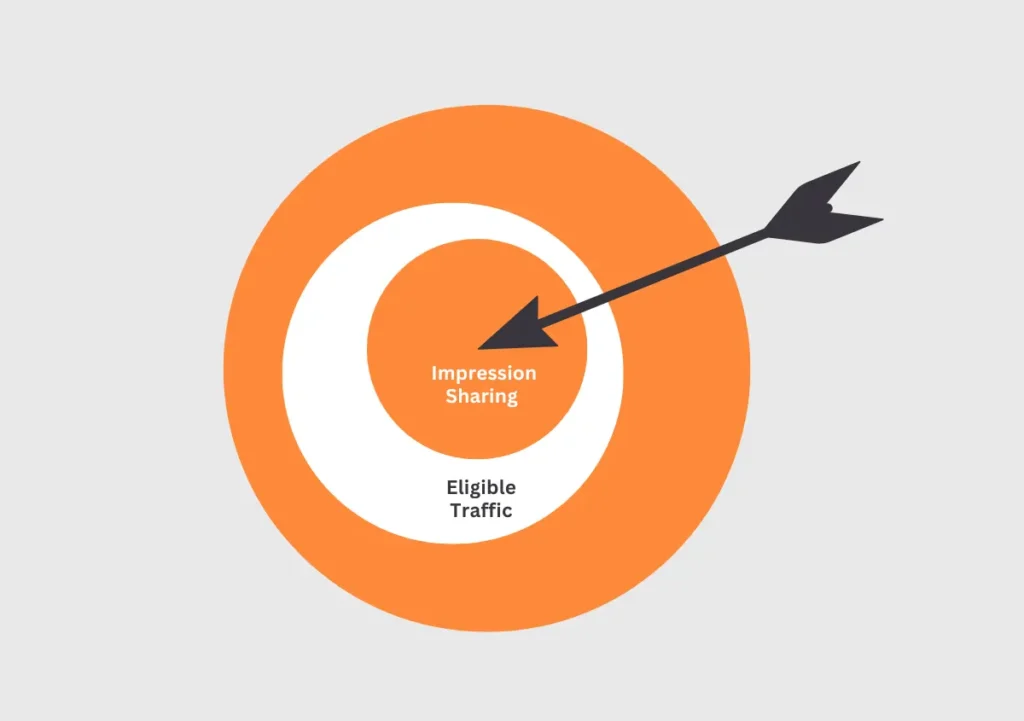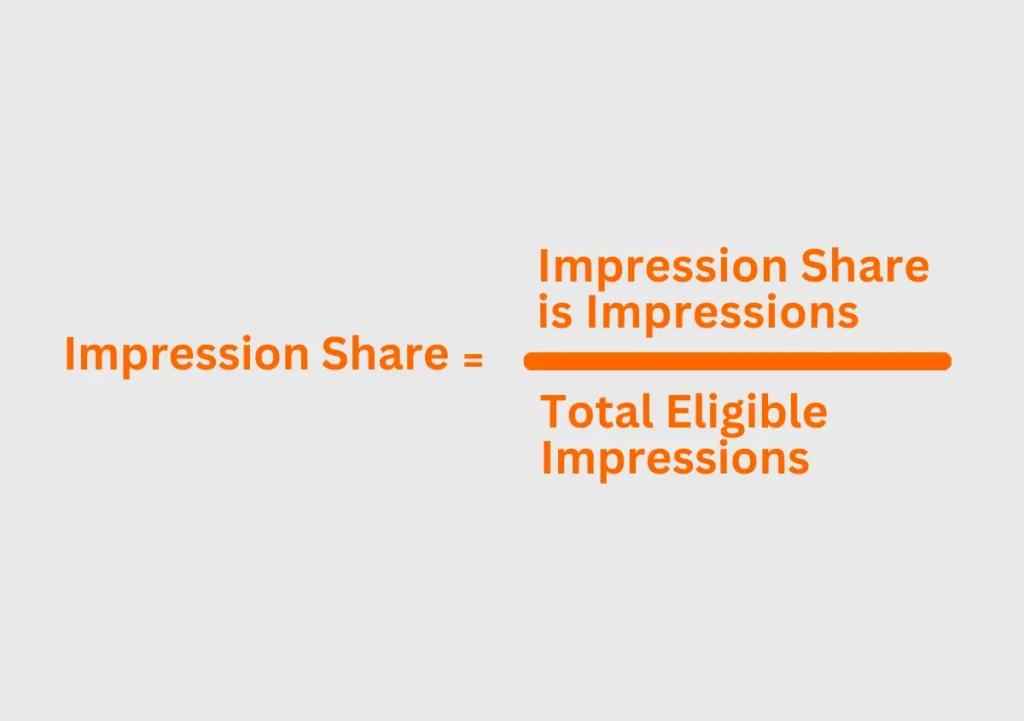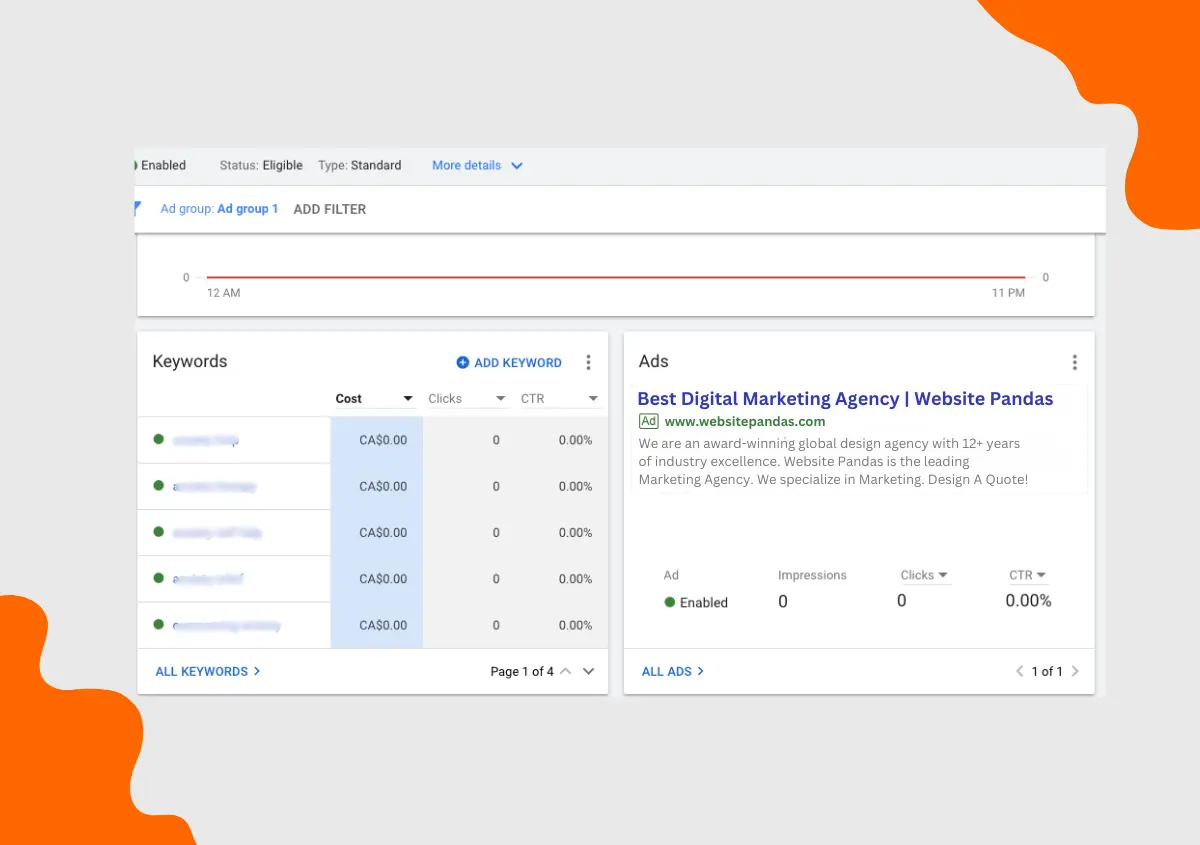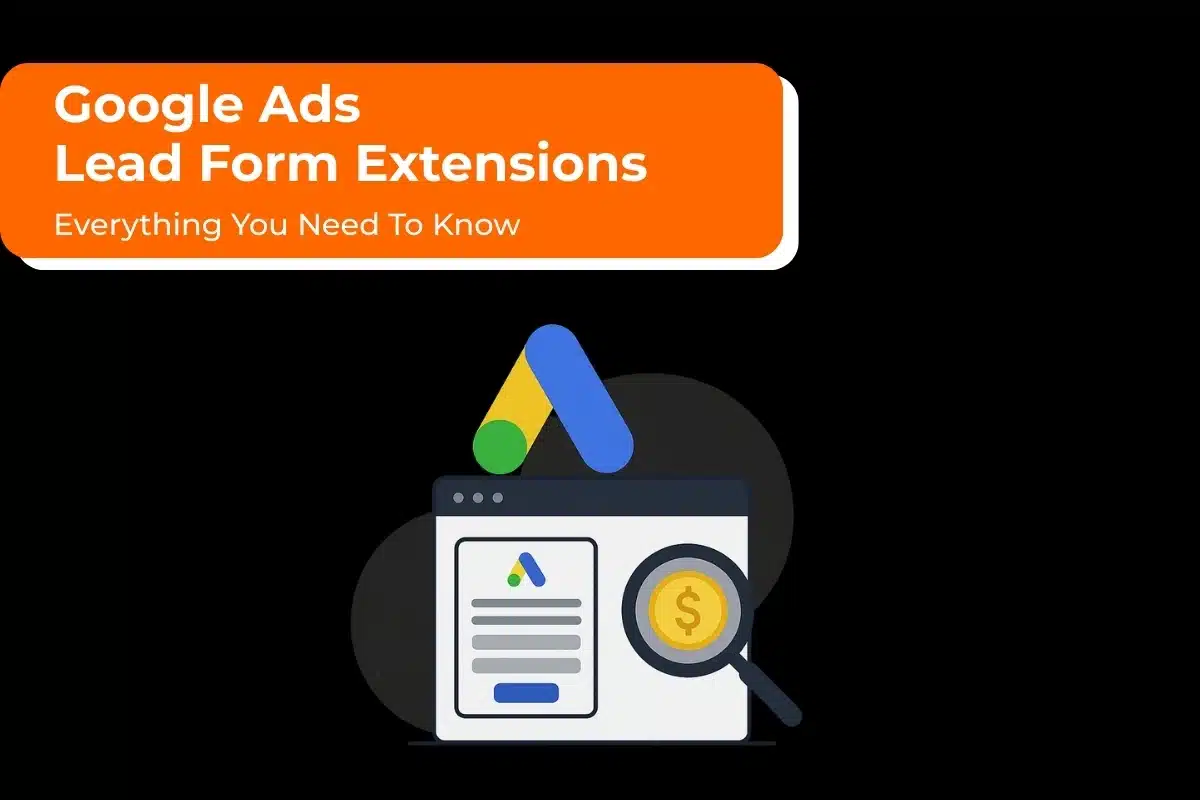Are you seeing few or no impressions from your Google Ads?
For a keyword-optimized ad campaign with no clicks or impressions, it may feel off. However, anyone can experience this.
So, what is happening? Why are my Google Ads not getting impressions? Did you make a mistake? Is it Google’s fault, or is there another business to blame? These are common questions you may have. But, worry not. We’ll explain the reasons and how to resolve the issues and get your campaigns off to a great start!
Before we get there, let’s first dive into the “Impression Share.”
What is Impression Share?

The majority of PPC and digital marketing strategists use the impression share (SIS or IS) statistic to calculate how many impressions you receive from your Google Ads and other networks.
Marketers can ascertain the proportion of certain ad impressions derived from the keywords they employ.
The number of impressions from your sponsored ads is known as impression share. The trickiest aspect is acquiring the correct quantity of impressions for your adverts, even if it sounds so simple.
Google Ads’ Impression Share Types
Understanding impression shares enables you to ascertain the sources of your impressions and the obstacles preventing your ads from expanding.
Search: It refers to the impression that search engines provide. Impressions are earned when someone types on Google and sees your advertising.
Search Exact: The impression that you receive from the search network for possessing precise keywords that correspond with people’s search queries is known as the search exact impression share. Thus, to increase the number of impressions for your website or e-commerce business, digital marketers strive to match the search queries as closely as feasible.
Search Lost impressions: It is the part, expressed as a percentage, that you lost as a result of poor ad rank or your campaign’s low budget, strategy, and many more reasons.
How to Calculate Google Ads Impression Share?

By dividing the total number of impressions by the entire number of eligible impressions, you may compute your impressions share.
Method: Impression share is impressions/total eligible impressions
Note that your eligibility is based on various parameters and ad settings, ranging from targeting to quality score. I know what you’re thinking—when my Google Ads aren’t receiving impressions, how am I going to calculate?
The explanation is that even though your Google ads may currently have zero impressions. you will eventually need to calculate them to determine which of your ads are receiving the most attention they need.
Also Read: Fix a Not Running Google Ads Performance Max Campaign?
Before You Start
At times, you may notice that your Search campaigns aren’t using up much of your daily budget or aren’t delivering as many impressions as you had anticipated. Let’s look at the most frequent causes of your ads not serving as well as provide instructions on how to use Google Ads’ troubleshooting tools.
What Happens When a Campaign is Activated?
It can take some time for your campaign to start providing impressions if you have just enabled your Search campaign. There are several explanations for this:
- Newly produced or updated advertisements must wait 24 to 48 hours to be evaluated to make sure they comply with all policy criteria.
- As Google Ads learns to optimize toward your predetermined target, ads utilizing automated bidding techniques may see performance swings or changes in expenditure.
- Google Ads could take a while to modify serving if you make changes to your campaign settings.
Using the Tool for Ad Preview
You may determine the reason for a certain search term’s potential inefficiency by utilizing the Ad Preview and Diagnosis tools. Keep in mind that the search results provided by this tool might alter in the future.
Navigate to your Google Ads account’s ad preview tool.
Guidelines for Action
When there is little or no traffic to your Search campaign, recommendations might assist in identifying areas where performance can be improved. When debugging these difficulties, for instance, keep an eye out for the following sorts of example recommendations.
Suggestions for Resolving Non-running Campaigns
- No campaign has begun, nor has it concluded.
- Start or stop an advertisement group
- Exhausted account budget
- Your ads were rejected or limited due to policy.
- Add or remove the pause in a keyword
Now, let’s look at the reasons behind not getting impressions and their fixes.
Also Read: 14 Reasons Why Google Ads Disapproved?
13 Causes & Fixes for Your Google Ads’ Inability to Receive Impressions
1. Issues in Your Account
You won’t be able to run your advertising until the issue is fixed if your account is suspended or if there is a financial dispute.
Fix: If Suspended: Use Google’s suspended account tool to check the status of your account automatically.
Regarding Billing Concerns: Examine your account budgets if you pay your invoices monthly. All of the account’s ads will cease to run if, before the end of the campaign, your total campaign expenses match the specified amount in the account budget. Study the creation and editing of an account budget.
For denied payments, check the “Transactions” or “Billing Summary” pages. Until the outstanding sum is settled, your account will not operate.
2. Issues in Billing Details
The information on your bill should be accurate. If Google discovers any problems with your billing information, you won’t be able to view impressions from your ads, and they won’t be displayed.
Fix: Verify that your ad’s billing details, including the payment card number and address, are accurate. Verify the billing information again because if it contains errors or isn’t valid, Google won’t display your advertising.
3. Date Range of Campaign
You may see performance statistics for the selected date period in Google Ads. Impression data for your campaign is only displayed within the time frame that it has been running.
Fix: Verify that the start and finish dates of your campaign are included in the date range.
4. Optimization Goals and Bid Targets are Low
Even if serving ads with a very low price is feasible, your campaign is unlikely to participate in or win as many auctions, and there’s a chance that your ads won’t receive any impressions. Your campaign could not succeed at all if you’re utilizing Smart Bidding and establishing CPA or ROAS objectives without taking past performance into account.
Fix: Verify that the optimization plan for your campaign is in line with your corporate objectives. For instance, utilize the Maximize Conversions approach if your objective is to increase the number of conversions within a given budget.
Based on past performance, evaluate if the human or automated bidding objective you have set for your optimization goal is attainable. By decreasing ROAS aims or raising CPA targets while utilizing Smart bidding, you may encourage the algorithm to bid higher and possibly receive more impressions. For instance, you should think about increasing your goal CPA if you’re utilizing target CPA bidding and it’s much lower than your historical average CPA. This is due to the possibility that your target CPA will be unachievable while maintaining acceptable traffic levels.
Use the bid simulator icon from the performance report on your ad groups page, if it is accessible.
5. Budget is Low
If you have a lower budget, your ads may not appear as frequently, but Google Ads ensures that your campaign stays under your spending limit. Due to a limited budget, your campaign status may potentially show as “Eligible (Limited),” which denotes that it is either not serving at all or is serving only a small amount.
Fix: If your campaign’s campaign status indicates that it is budget-limited, review the budget report to learn more about how your campaign’s spending has affected your spending limitations and performance relating to its average daily budget. And, to ensure your campaign has the funding to operate all day, raise your budget.
6. Search Volume is Low
Low search traffic is one of the key reasons Google shopping advertisements don’t receive any impressions. You may check the status column in the keyword area to see the volume of searches.
Fix: You can use a Google Ads keyword planner to determine which keywords have a large search volume once you’ve determined your keyword search status or level.
7. Impressions Cut Off by Negative Keywords
While keyword targeting is effective, it is crucial to use Negative keywords to weed out terms and phrases that suggest a searcher would not be interested in checking out or purchasing your goods.
Negative keyword examples include things like:
- “Careers” – Your landing pages won’t be relevant results. Because this suggests the searcher wants a job, not to purchase a product.
- Terms like “cheap” or “free” suggest that a customer might not be ready to pay for your goods outright and may instead prefer a free substitute. These are okay to include if you’re running closeout specials, inexpensive bundles, or free trials. But, they point to a misalignment between searcher intent and your objectives.
- “DIY” – This suggests that the consumer wants a lesson they can follow to do it themselves rather than a solution to their problem. That equates to “buy our product,” which goes against your intention of selling your products.
The problem arises when you incorporate negative keywords that contradict your primary search objective. Sometimes, you may want searchers to use a certain word, but it may not appear good when used out of context. In other cases, it may include employing a broad matching type that flags positive keywords you intended to target by utilizing synonyms for the keywords you identified. Positive and negative forces will clash, giving the negativity the upper hand and leaving you empty-handed.
Fix: You need to do is switch the negative keyword match type to an exact match to avoid negative keywords.
8. Quality Score is Low
An estimation of the user experience, when they view your Search advertising, is provided by the ad quality score. Better performance, including better ad placements and cheaper cost, is typically the result of higher ad quality. There could be several quality indicators for different types of ads. For instance, you may evaluate your Ad Strength for Responsive Search Ads. Ad Rank thresholds are used by Google to establish the minimum quality standard for adverts.
Fix: Evaluate your quality score for each term. In comparison to other marketers, a higher Quality Score indicates that your ad and landing page are more pertinent and helpful to someone looking for your term.
9. Ad Scheduling Issues
For the ads to effectively target your audience, timing is essential. If not, a badly designed advertising program will quickly squander your time and money.
Ad placements that aren’t carefully thought out might have an impact on the ads that reach your target market and lessen the impact of your campaigns. The efficacy of your campaign will be impacted. For instance, if you offer B2B goods and schedule ads to air exclusively at night.
Your target audience will not be able to look for anything if your ad schedule is limited to one hour each day. Your ad won’t appear if no searches are made in that hour. Think about extending the days and/or hours of your ad serving schedule.
Moreover, your advertising campaign will be unsuccessful if it is scheduled to run at times of the day or night when the target market is not looking for your offerings.
Fix: You may already have a basic notion of when your audience is most likely to watch, but it takes some study to find out exactly when they do.
10. Targeting any Conflict with Different Campaigns or Ad Groups
You may have many campaigns or ad groups in your account that are eligible for overlapping auctions because of related keywords or other targeting. If there is overlapping targeting, the biggest gainer can be traffic to one of your efforts.
Fix: To prevent it from conflicting with other campaigns in your account, review and maybe update the targeting for your campaign.
11. Impression Share Lost
The proportion of time that your advertising was not displayed on the Search Network. Because, your ad rank in the auction may be found with the use of impression share data, especially Lost Search IS (ad rank).
Fix: You can reduce Lost Search IS (ad rank) by raising the quality and quantity of your bids. If not enough traffic was generated by your campaign, impression share statistics might not appear.
12. Tracking Conversion Issues
Ad serving may be restricted if your campaign is utilizing automated bidding to optimize for conversions but isn’t receiving enough conversion data or if your conversion tracking isn’t configured properly.
Fix: To confirm your conversion, use the Conversion tracking status troubleshooter. Make sure your intended conversion activity happens frequently enough to be used for automated bidding by reviewing its past performance.
13. Dynamics of Auctions
The effectiveness of your campaign may be impacted by other marketers who are taking part in the same auctions as you. Your advertising may earn fewer impressions. If, for instance, a new advertiser starts participating in the same auctions as your campaign.
Fix: To evaluate your success against other marketers in the same auctions as you, use the Auction Insights report. You may use this information to inform your budget and bidding selections.
Read Also: Google Ads: What is a Good Optimization Score?
Wrapping It Up
It can be annoying to have spent time and energy setting up your Google ads campaign with all authorizations in place only to get zero impressions.
One possibility could be issues with your product feed, a Google Ads policy violation, or other Google Ads problems. The reasons are clear as mentioned in this blog. Therefore, the success of your campaign depends on resolving these issues as soon as possible.
That said, if you need help with this, connect with our Google Ads Specialist. We’re happy to help!






